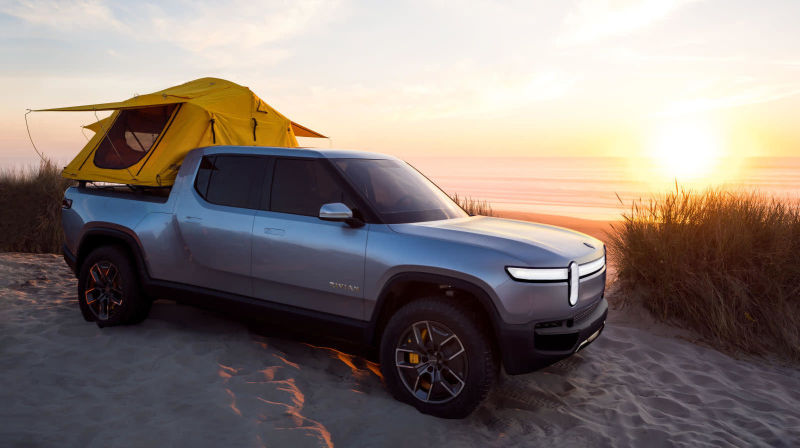
We know the Rivian R1T electric pickup truck and Rivian R1S crossover are planned to go into production in 2020 and 2021, and we know they’ve been testing development models disguised to look like the Ford F-150, but a recent profile from Car Magazine reveals exactly what the company plans to go up against.
The Rivian R1T pickup is planned to start at $61,500 after the full federal tax credit, with a 250 mile range as a baseline and models that offer all the way up to 400 miles. The company also claims it will be capable of 0 to 60 mph time of 3 seconds and able to tow up to 11,000 pounds, though it’s unclear which configuration those figures are tied to (but it’d be safe to assume it’s the highest performance trim).
Car Magazine spoke to Rivian CEO RJ Scaringe, Executive Director of Engineering and Vehicle Programs Mark Vinnels, formerly of the McLaren MP4-12C development team, and Vice President of Vehicle Design Jeff Hammoudin its recent profile, where it was revealed what exactly the Rivian team are planning for.
The benchmark fleet of vehicles, which Scaringe now drives on rotation since he doesn’t currently own a vehicle of his own, includes the Porsche Cayenne Turbo S, the Land Rover Discovery, the Tesla Model X, and the Ford Raptor.Not a bad group at all.
Here’s how Vinnels described the positioning of Rivian’s models to Car Mag:
Rivian’s exhaustive durability programme is underway right now, testing how the EVs perform in the wintry chill of Minnesota as well as the bake of Arizona. Vinnels draws a diagram positioning Rivian products somewhere between the gung-ho toughness of a Subaru, the eco credibility of a Tesla and the family practicality and off-roading skills of a Discovery.
‘We’re using air springs and hydraulic roll control, so we can change the roll stiffness,’ engineering chief Vinnels explains. ‘We can have rigidity for high-speed handling and our benchmark on road is a Cayenne Turbo. But we can also change the spring rate at the rear to cope with a heavy load. We are aiming for Audi Q7 levels of NVH [noise, vibration and harshness].’ Suspension is by double wishbones up front and a multi-link rear, controlled by adaptive dampers.
Advertisement
On the surface, Rivian appears to be a little more prepared, well-funded, and overall more organized than many of the EV startups, like Faraday Future, we’ve seen struggle to establish themselves.
It’s also a good sign that they’ve picked some of the best cars to go head to head with, so here’s hoping the finished product is as good as its shaping up to be, if or when they go into production next year.













